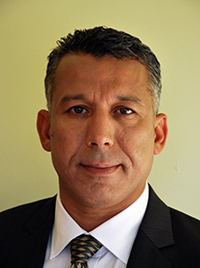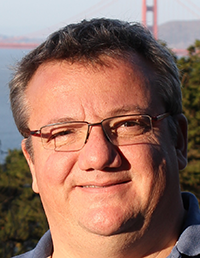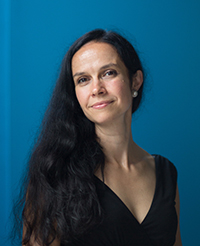Navigation
Keynotes
On the Design of Reliable Virtual Networks
Abstract
Network Virtualization allows multiple Virtual Networks to coexist on a single physical substrate in isolation from each other, i.e., without security or performance interferences. It has been propounded as a diversifying attribute of the future inter-networking paradigm that can enable seamless integration of new features resulting in a more rapid evolution of the Internet architecture. More recently, it is being rolled out in data center networks as a means to provide bandwidth guarantees to cloud applications. Efficient utilization of the shared substrate network resources is dependent on effective techniques for virtual network embedding (VNE), which maps virtual networks on physical substrate network resources. A significant body of research focused over the years on devising efficient algorithms for the VNE problem, mostly assuming that the substrate network remains operational at all times. In practice, however, physical link and node failures commonly occur as part of everyday operations, propagating in virtualized environments to multiple hosted virtual networks. Back in 2010 we removed this assumption introducing and formulating the Survivable Virtual Network Embedding (SVNE) problem by incorporating single substrate link failures. Since then, a number of research proposals extended SVNE in various ways to handle substrate link as well as node failures. In general the goal of SVNE is to achieve reliable embedding of virtual networks, i.e., a mapping of virtual network requests onto substrate network resources capable to survive substrate resource failures. In this talk, I will discuss the key challenges in this area and present some of our recent contributions to the design of reliable virtual data centers and virtual transport networks.
 |
by Raouf Boutaba (U. Waterloo, Canada) |
Biography: Raouf Boutaba is a Professor of Computer Science at the University of Waterloo. He is the founding Editor in Chief of the IEEE Transactions on Network and Service Management (2007-2010), and on the editorial board of several other journals. He served as the general or technical program chair for a number of international conferences including IM, NOMS and CNSM. His research interests are in the areas of network and service management. He has published extensively in these areas and received several journal and conference Best Paper Awards such as the IEEE 2008 Fred W. Ellersick Prize Paper Award. He also received several other recognitions such as the Premier's Research Excellence Award, Industry research excellence Awards, fellowships of the Faculty of Mathematics, of the David R. Cheriton School of Computer Science and several outstanding performance awards at the University of Waterloo. He has also received the IEEE Communications Society Hal Sobol Award and the IFIP Silver Core in 2007, the IEEE Communications Society Joe LociCero and the Dan Stokesbury awards in 2009, the IEEE Communications Society Salah Aidarous award in 2012, and the recipient of the 2014 McNaugthon Gold Medal.. He served as a distinguished lecturer for the IEEE Computer and Communications Societies. He is fellow of the IEEE, a fellow of the Engineering Institute of Canada and a fellow of the Canadian Academy of Engineering.
Resilience & 5G Slicing: Some Control and Liabilities Issues
Abstract
Beyond "softwarization" and virtualization, 5G is coming with potentially more technical and architectural disruptions which in turn, result in resilience issues. Slicing is a promise of ultimate abstraction of the system & service complexity. One may pay attention to the dependencies, responsibilities and control perimeter/authority impacting service level delivered at the end.
The 5G scope cannot be wider as it combines any type of networking segments, the convergence with Information Technologies infrastructure and technologies as well as Operational Technologies coming from vertical markets. It means that the horizontal integration (End-to-End), and the vertical one across remaining layers plus the unprecedented tenant slices is becoming a pre-requisite. It thus mandates a high level of interworking to achieve a consistent overall control and in particular facing attacks or failures. Moreover, if one considers that the market fragmentation (verticals, IoT, content, brokering, etc.) will involve more and more players, it may be difficult to answer this simple question: "who's in charge of what". Last but not least, the "slices" are expected to be not only virtual but metamorphic, stitching to the actual services needs of the tenants instead of a (at least partially) stable system. Sustaining the service levels in this new context raises questions on system resilience and in particular historical design approaches evolution.
Do we need more regulation (arbitrating responsibilities)? Is the technology ready for the complex but required interactions? What are the new threats inherent to the 5G slicing? Is there any room for Software-Defined Resilience beyond the emerging Software-Defined Security?
This discussion will introduce some of the issues above-mentioned as well as some technology or research perspective in this area.
 |
by Emmanuel Dotaro (Thales Communications and Security, France) |
Biography: Emmanuel Dotaro is the head of Network & Security labs at Thales Secure Communications & Information Systems. He is also leading the Network of Experts in communications across the Thales group. Emmanuel received an M.S. degree in Computer Science from the University of Versailles, France in 1996. After three years spent in the Performance Evaluation Laboratory of Institut National des Telecommunications while holding a teaching position at the University of Versailles, he joined in 1999 the Alcatel Research and Innovation Laboratory in Marcoussis, France. He directed the research on networking topics at Bell Labs including Packet Transport Infrastructure and Semantic and Autonomic Technologies. He joined Thales in 2009 as director of innovation for C4I systems and is now leading Network and Security labs. He holds more than 30 papers as author or co-author as well as more than 30 patents in the ICT field. He is at the initiative, contributor or leader of various major European and national collaborative research projects. He is serving at various conference or journal Technical Committees as well as regional or national clusters of the digital ecosystem. His current research interests are network softwarization, radio and mobile networks, cloud brokering, security as a service, security policies enforcement in 5G and IoT systems, detection and remediation related cybersecurity topics.
Coding and computation in distributed storage for dynamic networks
Abstract
Coding in storage, for performing error detection and correction, has been a long-standing active domain of engineering. Recently, the rise of distributed and geo-dispersed storage has generated new areas of investigation, generating different ways of applying existing codes, and prompting the development of new ones. In this brief overview, we consider two problems in the area. The first one is that of updating linear functions with low communication cost, when the changes to the data from which the functions are computed are sparse. We show that variations on maximally recoverable codes, which have been commonly used in storage, allow such updates. The second problem we envisage is that maintaining survivability of data in a highly dynamic setting, where nodes may leave and join the network. In such a dynamic setting, which we model using a simple probabilistic construct for node arrivals and departures, the cost of storage and that of communication affect the possible survivability*.
* Joint work with Symon Acedanski, Vitaly Abdrashitov, Hassan Charaf, Clifford Choute, Supratim Deb, Frank Fitzek, Daniel Lucani, Prakash Narayana Moorthy, Morten Pedersen, Martin Sipos, Aron Szabados, Tamas Toth.
 |
by Muriel Médard (MIT, USA) |
Biography: Muriel Médard is the Cecil H. Green Professor in the Electrical Engineering and Computer Science Department at MIT and leads the Network Coding and Reliably Communications Group at the Research Laboratory for Electronics at MIT. She has co-founded two companies to commercialize network coding, CodeOn and Steinwurf. She has served as editor for many publications of the Institute of Electrical and Electronics Engineers (IEEE), of which she was elected Fellow, and she is currently Editor in Chief of the IEEE Journal on Selected Areas in Communications She was President of the IEEE Information Theory Society in 2012, and served on its board of governors for eleven years. She has served as technical program committee co-chair of many of the major conferences in information theory, communications and networking. She received the 2009 IEEE Communication Society and Information Theory Society Joint Paper Award, the 2009 William R. Bennett Prize in the Field of Communications Networking, the 2002 IEEE Leon K. Kirchmayer Prize Paper Award and several conference paper awards. She was co-winner of the MIT 2004 Harold E. Edgerton Faculty Achievement Award. In 2007 she was named a Gilbreth Lecturer by the U.S. National Academy of Engineering.